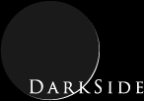Radio Frequency Bandwidth
The required bandwidth before turbocoding, considering the bit-per-symbol rate N, the number of bits per symbol l, and the reduced spectral efficiency caused by the roll-off factor κ, is expressed as:
This results in an uplink bandwidth of 22.5 kHz and a downlink bandwidth of 3.75 MHz.
Turbo Coding
The smallest block size used by the suggested turbo encoder/decoder was used, as no advantage was found to using a larger block size. 2/3 turbo code will achieve a carrier-to-noise ratio within 2 dB of the Shannon channel capacity. The increased bandwidths needed are 33.75 kHz for the uplink and 5.625 MHz for the downlink.
Forward Error Correction
The details for the error correction scheme were based on the moon at apogee (the worst case scenario), in which path delay is 1.352 seconds and roundtrip delay is 2.703 seconds.
With a bit error rate of 10-6, the probability of sending one or two bit errors in a block is Ps = 63.998 × 10-6. Therefore one out of every 15,626 blocks will have either one or two bit errors, corresponding to one block error every 33.3355 seconds on the Earth-lander uplink or 0.222 seconds on the Earth-lander downlink.
When a negative acknowledgement (NAK) is sent after a receive error, then 80,100 and 189,844 more blocks will travel over the uplink and downlink, respectively, before the errored block is retransmitted. This slows the throughput by 83.8% and 92.4%, and requires transmit buffers of 12.5 Mb and 82 kb on the link.

